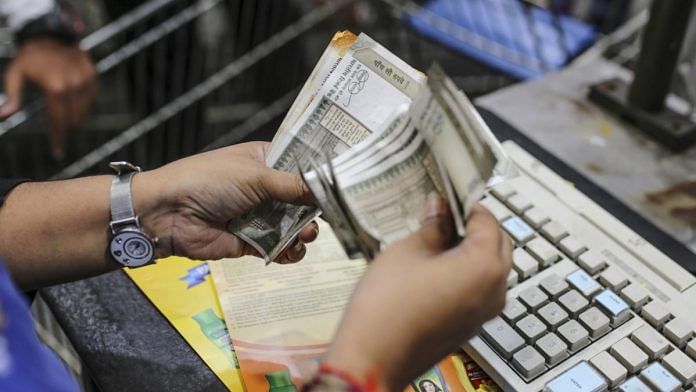
New Delhi: The Indian economy may have contracted by around 7-7.5 per cent in 2020-21, an improvement over the 8 per cent contraction forecast by the National Statistical Office (NSO) earlier this year, according to estimates of economists.
India will release the GDP numbers for the January to March quarter as well for the full year 2020-21 on 31 May.
Economists expect that a surge in government expenditure in the January to March period may have helped the economy to register positive growth in the fourth quarter and helped in improving the full year numbers.
However, with the onset of the second wave of the Covid-19 pandemic, this recovery has now been disrupted and India is unlikely to register double digit growth rates in 2021-22 as initially forecast.
The second wave of the pandemic saw a massive surge in infections and deaths across India forcing many states to implement lockdowns from April that continue even now. This has threatened India’s fragile economic recovery that was visible from the second half of the last fiscal.
Growth in Q4
Devendra Pant, chief economist at India Ratings and Research, said India’s GDP may have grown by 0.6 per cent in the January to March quarter leading to a full year contraction of 7.5 per cent.
“The fourth quarter growth is mainly on account of increased government expenditure both on the current and capital side. The rise in central government capital expenditure was mainly due to a growth in loans and advances. This may have been given to state governments or central public sector enterprises,” he said.
Barclays forecast that India’s GDP may have contracted by 7.1 per cent in 2020-21.
“The resurgent Covid-19 wave took the wind out of an economic recovery that was gathering momentum in Q4 FY20-21 (January-March). We expect the economy to have expanded by 3.5% y/y (year-on-year) in Q4 FY21, as a low base and strong sequential gains helped propel GDP growth to a five-quarter high,” Rahul Bajoria, chief India economist at Barclays said in a note dated 25 May.
The State Bank of India (SBI) has forecast that the economy will contract by 7.3 per cent in 2020-21 aided by a 1.3 per cent growth in Q4.
FY22 GDP expected to be less than 10%
An improvement in 2020-21 forecasts, however, will mean that the growth estimates for 2021-22 will have to be revised downwards due to the base effect.
Most economists and financial institutions have lowered India’s GDP growth for the current fiscal to less than 10 per cent as the economic impact of the second wave of the Covid-19 pandemic and the consequent state lockdowns have been worse than anticipated.
“One likely consequence of any upward revision in FY21 estimates is a concomitant decline in FY22 GDP estimates,” said Soumya Kanti Ghosh, group chief economic advisor, SBI.
In a 25 May report, he pointed out that Covid infection is still spreading in rural areas with the share of rural districts in new cases rising quite rapidly during May even as overall cases have started declining from the second week of May.
Ghosh estimated that the real GDP loss in the April-June quarter could be in the range of Rs 4-4.5 lakh crore.
Bajoria said the economic costs of the recent surge in cases are rising rapidly pointing out that the intensification and spread of movement curbs across states through April and May has likely impeded activity in Q1 FY22.
Barclays has lowered India’s growth forecast to 9.2 per cent in 2021-22 from the earlier 11 per cent forecast.
The risks to growth were also flagged by the Reserve Bank of India in its annual report released earlier this month. It pointed out that if India is able to limit the spread of the second wave, the economic impact could be limited to the first quarter.
The central bank added that in all other outcomes, losses in terms of lives, employment and output are likely to be adverse and long-lasting.
Subscribe to our channels on YouTube & Telegram
Why news media is in crisis & How you can fix it
India needs free, fair, non-hyphenated and questioning journalism even more as it faces multiple crises.
But the news media is in a crisis of its own. There have been brutal layoffs and pay-cuts. The best of journalism is shrinking, yielding to crude prime-time spectacle.
ThePrint has the finest young reporters, columnists and editors working for it. Sustaining journalism of this quality needs smart and thinking people like you to pay for it. Whether you live in India or overseas, you can do it here.